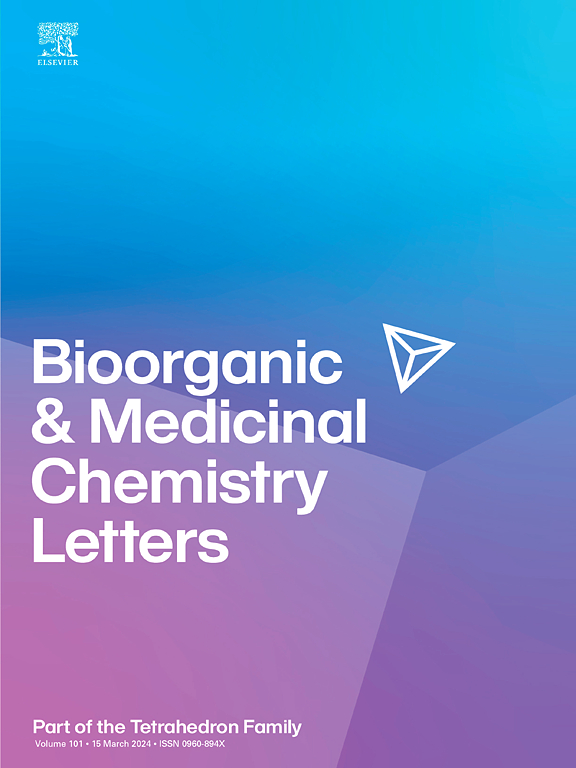靶向KRAS和SOS1的PROTACs抗肿瘤药物综述
IF 2.2
4区 医学
Q3 CHEMISTRY, MEDICINAL
引用次数: 0
摘要
KRAS是最常见的突变癌基因,其突变激活驱动了大约25%的人类癌症。Son of Sevenless 1 (SOS1)在KRAS信号通路中起着关键作用,通过催化无活性的gdp结合KRAS转化为活性的gtp结合KRAS,因此被认为是泛KRAS抑制的一个有希望的靶点。目前,四种krasg12c特异性抑制剂,即sotorasib、adagrasib、fulzerasib和garsorasib,已获得监管机构批准。然而,对KRASG12C抑制的获得性耐药迅速出现。此外,其他常见的KRAS突变,包括G12D和G12V,仍然缺乏有效的治疗药物。近年来,protac介导的KRAS和SOS1降解已成为克服这些问题的一种有希望的策略,并取得了快速进展。本文综述了降解KRAS和SOS1的PROTACs的化学结构、设计策略、构效关系(SAR)研究以及体外和体内活性,并揭示了未来加速开发KRAS驱动癌症新化疗的挑战和机遇。本文章由计算机程序翻译,如有差异,请以英文原文为准。

An overview of PROTACs targeting KRAS and SOS1 as antitumor agents
KRAS is the most frequently mutated oncogene and its mutational activation drives approximately 25 % of human cancers. Son of Sevenless 1 (SOS1) plays a pivotal role in the KRAS signaling pathway through catalyzing the conversion of inactive GDP-bound KRAS to active GTP-bound KRAS, and is thus considered as a promising target for pan-KRAS inhibition. Currently, four KRASG12C-specific inhibitors, namely sotorasib, adagrasib, fulzerasib and garsorasib, have garnered regulatory approval. However, acquired resistance to KRASG12C inhibition rapidly emerges. In addition, the other prevalent KRAS mutations, including G12D and G12V, are still lacking effective therapeutic drugs. PROTAC-mediated KRAS and SOS1 degradation has been emerged as a promising strategy to overcome these issues, and achieved rapid progress in the recent years. This article provides an overview of the chemical structures, design strategies, structure-activity relationship (SAR) studies as well as in vitro and in vivo activities of the PROTACs degrading KRAS and SOS1, and sheds light on future challenges and opportunities to accelerate the development of new chemotherapies for KRAS-driven cancers.
求助全文
通过发布文献求助,成功后即可免费获取论文全文。
去求助
来源期刊
CiteScore
5.70
自引率
3.70%
发文量
463
审稿时长
27 days
期刊介绍:
Bioorganic & Medicinal Chemistry Letters presents preliminary experimental or theoretical research results of outstanding significance and timeliness on all aspects of science at the interface of chemistry and biology and on major advances in drug design and development. The journal publishes articles in the form of communications reporting experimental or theoretical results of special interest, and strives to provide maximum dissemination to a large, international audience.

 求助内容:
求助内容: 应助结果提醒方式:
应助结果提醒方式:


